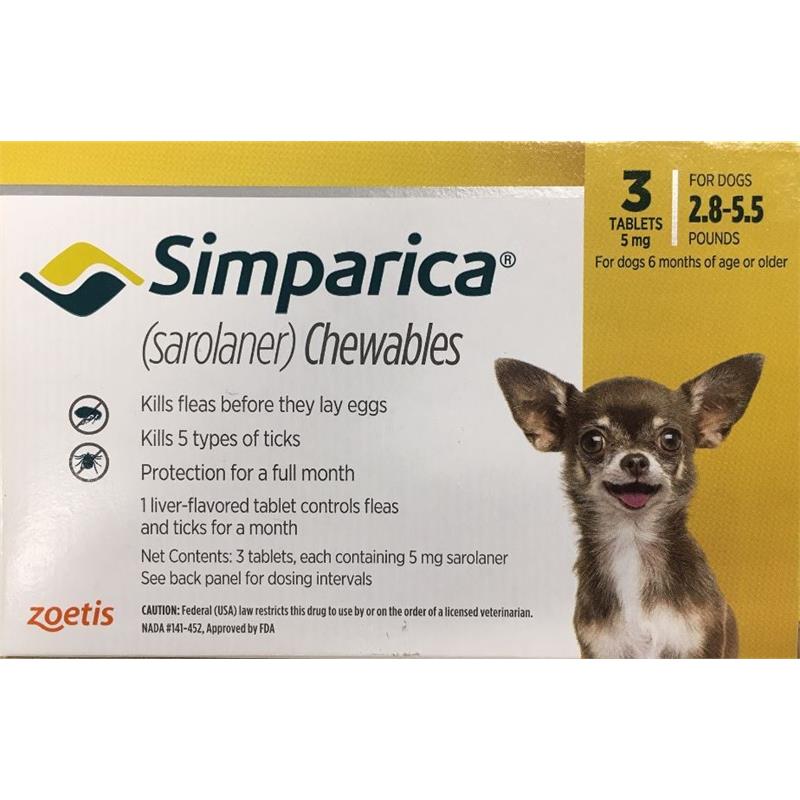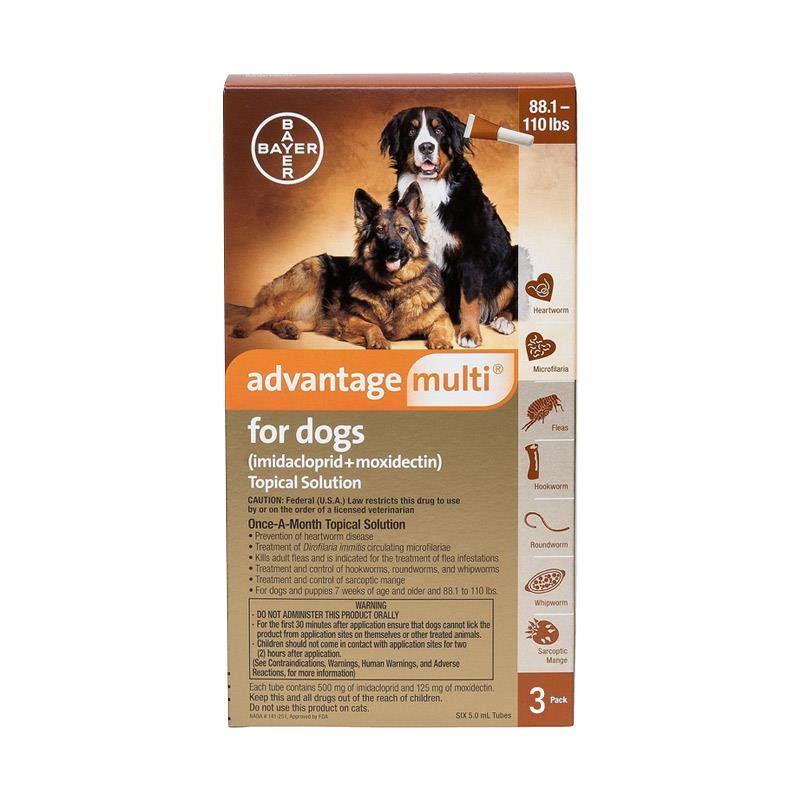Simparica vs Advantage Multi
Your primary concern as a pet parent is the health of your dog. Finding the best flea and tick treatment is an essential step toward keeping your dog happy, healthy, and protected against these potentially dangerous parasites. Simparica Chewable Tablets and Advantage Multi are two of the favorite treatment options among discerning pet parents. While either option would be a great way to keep fleas and ticks far away from your precious pup, there are certain distinguishing factors that make these two medications very different from one another. Keep reading to see how they compare!
What makes Simparica and Advantage Multi different from one another?
The most notable difference between these two medications is that Simparica is an oral flea and tick treatment, while Advantage Multi is a topical control option. Many dog owners prefer one mode of treatment over the other. Each of these top-quality options allows for convenient, once-monthly administration, and they each require a prescription from a veterinarian.
Simparica contains an active ingredient of Saroloner. Advantage Multi offers a combination of Imidacloprid and Moxidectin. Simparica is safe for use in puppies at least 6 months old, weighing over 2.8 pounds. Advantage Multi may be used on puppies weighing over 3 pounds, but it can be administered beginning at an age of 7 weeks. Puppy parents frequently choose Advantage Multi to get an early head start on protecting their pup, but might choose to begin administering Simparica instead when the dog is 6 months old.
Simparica starts killing fleas within 3 hours and ticks within 8. Advantage Multi begins to kill fleas within 12 hours. Either option will provide rapid eradication and protection. Another key difference between these two products are the parasites they protect against. Simparica is effective in killing both fleas and ticks. Advantage Multi also kills fleas, but is not effective against ticks. However, it does offer added protection against heartworms, hookworms, roundworms, and ear mites, making it an appealing, broad-spectrum treatment option. .
Closing thoughts about Simparica vs. Advantage Multi
As a loving pet parent, you can’t go wrong with either of these top-quality treatments. However, you might find yourself preferring one over the other for a number of reasons. If your puppy is too young to take Simparica, opting for Advantage Multi is a no-brainer. If you prefer oral administration over topical, you’ll probably lean toward Simparica.
If your goal is to treat your dog for heartworms and other parasites as you eradicate a flea infestation, you might opt for Advantage Multi. However, if your dog requires protection against ticks, Simparica may be the way to go.
Talk to your veterinarian at your dog’s next appointment about Simparica and Advantage Multi. Your vet knows your dog well, and they can help you make an informed decision before they prescribe treatment. If you find yourself with a question about either of these medications, the Allivet pharmacists are available to consult pet parents.
| Feature | Simparica | Advantage Multi |
|---|---|---|
| Kills Fleas | Yes | Yes |
| Repels Fleas | No | No |
| Kills Flea Eggs and Larvae | No | No |
| Kills Ticks | Yes | No |
| Repels Ticks | No | No |
| Repels Mosquitoes | No | No |
| Prevents Heartworm | No | Yes |
| Other Parasites | No | Ear mites, roundworms, and hookworms |
| Waterproof | Yes since taken orally | Yes |
| How Long to work | Kills fleas within 3 hours and ticks within 8 hours. | Begins to kill fleas within 12 hours |
| Taste | Liver | N/A |
| Active Ingredient | Sarolaner | Imidacloprid and Moxidectin |
| RX Required | Yes | Yes |
| Application Type | Chewable Tablet | Topical |
| Dosing | 1 tablet per month | 1 application per month |
| Age | Dogs 6 months and older weighing at least 2.8 pounds | Dogs 7 weeks and older that weight at least 3 pounds |
| Manufacturer | Zoetis | Bayer Animal Health |
| Safety | Not approved for breeding, pregnant, and lactating dogs. | Speak to your vet about risks associated with breeding, pregnant, or lactating dogs |
Other Simparica Comparisons
Other Advantage Multi Comparisons
- Advantage Multi vs Bravecto
- Advantage Multi vs Nexgard
- Advantage Multi vs Trifexis
- Advantage Multi vs Revolution
- Advantage Multi vs Comfortis
- Advantage Multi vs Frontline Plus
- Advantage Multi vs K9 Advantix II
- Advantage Multi vs Advantage II
- Advantage Multi vs Capstar
- Advantage Multi vs Seresto
- Advantage Multi vs Credelio
- Advantage Multi vs Sentinel
- Advantage Multi vs Heartgard



